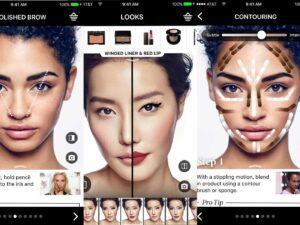Technology is rapidly improving and advancing all the time, and so does to e-Commerce. The Virtual Reality (VR), which provides an artificial simulated environment are now used in various sectors including e-Commerce. People are gradually embracing this new ‘world’, where most VR users said they used the technology for games, movies and TV shows but many had been shopping in the virtual world. The VR brings online shopping experience to the next level by immersing customers into a fully interactive virtual environment. It is more than just a memorable experience, but gains more attention and gets people talking about it through a powerful marketing technique, Word of Mouth.
 In Malaysia, ONE VR has launched a 3D shopping mall experience called VI-Mall which allows shoppers to virtually navigate, walk through a simulated shopping mall environment, visit shops, check out products and make purchases in its virtual stores that makes online shopping more enjoyable. Besides, shoppers can interact with other shoppers via the social chat feature available in VI-Mall. The spread of Covid-19 boosts customers developing and adapting new shopping habits. The VR has proven to bridge the gap between retailers and consumers since the COVID-19 outbreak. It helps sellers drive more sales, convince customers while purchasing products, provide a novel experience and leave a lasting impression. As per example, the e-commerce leading company named Alibaba relies heavily on the use of VR for direct transactions, while Shiseido has launched a VR experience in Malaysia as its first country in the world. Bringing VR technology to the beauty industry, makeup app by Sephora uses facial recognition to empower customers to try on products by scanning customer’s face, eyes, lips, and cheeks for product placement, and let them try on makeup virtually. They can see just what the eyeliner or that lipstick looks like on them. A virtual step-by-step tutorial also customized to customer’s face, colours match to their outfit, and compare hundreds of colour swatches instantly.
In Malaysia, ONE VR has launched a 3D shopping mall experience called VI-Mall which allows shoppers to virtually navigate, walk through a simulated shopping mall environment, visit shops, check out products and make purchases in its virtual stores that makes online shopping more enjoyable. Besides, shoppers can interact with other shoppers via the social chat feature available in VI-Mall. The spread of Covid-19 boosts customers developing and adapting new shopping habits. The VR has proven to bridge the gap between retailers and consumers since the COVID-19 outbreak. It helps sellers drive more sales, convince customers while purchasing products, provide a novel experience and leave a lasting impression. As per example, the e-commerce leading company named Alibaba relies heavily on the use of VR for direct transactions, while Shiseido has launched a VR experience in Malaysia as its first country in the world. Bringing VR technology to the beauty industry, makeup app by Sephora uses facial recognition to empower customers to try on products by scanning customer’s face, eyes, lips, and cheeks for product placement, and let them try on makeup virtually. They can see just what the eyeliner or that lipstick looks like on them. A virtual step-by-step tutorial also customized to customer’s face, colours match to their outfit, and compare hundreds of colour swatches instantly.

Ikea Virtual Apps- photo courtesy fromhttps://www.ikea.com/au/en/customer-service/mobile-apps/say-hej-to-ikea-place-pub1f8af050
The VR enables customers to visit real-world simulations of storefronts from their home or the comfort of their couch, like offered by eBay; Myer for their world’s first VR department store. IKEA’s Place app for instance, gives customers a memorable shopping experience in physical stores by allowing customers to virtually place furnishings and see how furniture looks in their room before buying. As a 3D and true to scale, the IKEA Place can envision how products will look in customers’ homes and make sure it’s just the right size, design and functionality for their room from sofas, lamps, rugs to tables and all of the products.
The use of VR headsets provides a great way for customers, as per provided by Audi, to view their dream car in 3D, where the immersive visualizations and interactions help customers understand their needs and expectations based on in-store e-Commerce experience. With 360 degrees of view, customers may understand the products better from every angle and rely less on products’ descriptions. In another sector, developers can bring their showrooms to life and open their customers’ minds and homes to new possibilities with new ways of exploration and visualization. It allows customers to walk through the virtual showroom to explore the property and zoom in on products, hence facilitating better visualization in building a realistic experience.
Whether in-store, online or at home, the VR immerses customers in products and meets them at every turn. The global population should be prepared to embrace VR technology with open arms as it holds the key to unlock endless doors of unexplored potential in the near future.

About the author:
Dr. Nor Hidayati Zakaria has been active for many years in the field of Information Systems and has authored a number of publications in indexed and top quartile journals. She holds a PhD in Information Systems from Queensland University of Technology (QUT), Australia. For more information about her research and publication, visit https://business.utm.my/norhidayati/


